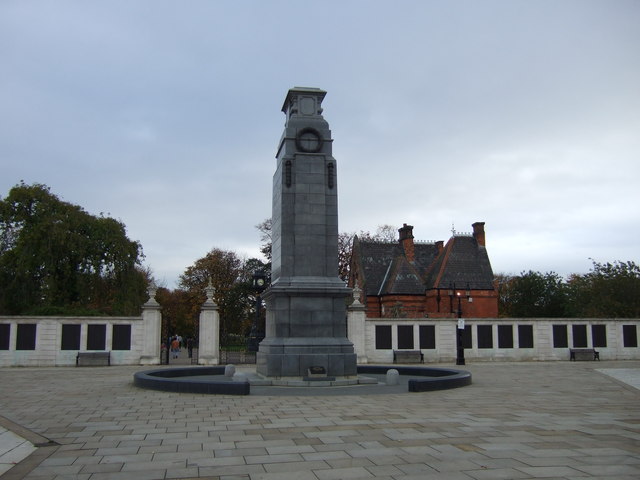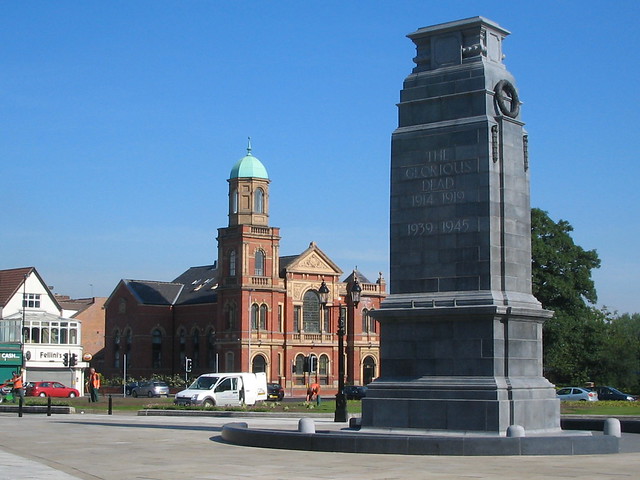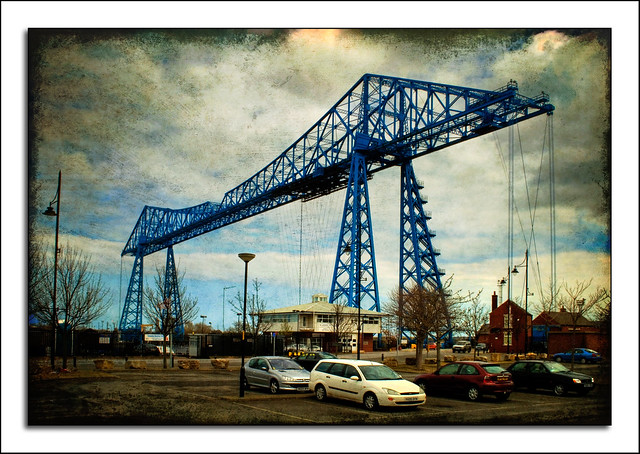Topics > Tees Valley > Middlesbrough > Middlesbrough during WW2
Middlesbrough during WW2
Middlesbrough was the first major British town and industrial target to be bombed during the Second World War. The Luftwaffe first attacked the town on 25 May 1940 when a lone bomber dropped 13 bombs between South Bank Road and the South Steel Plant. One of the bombs fell on the South Bank football ground making a large crater in the pitch. The bomber was forced to leave after RAF night fighters were scrambled to intercept. Two months after the first bombing Prime Minister Winston Churchill visited the town to meet the public and inspect coastal defences.
German bombers often flew over the Eston Hills while heading for targets further inland, such as Manchester. On 30 March 1941 a Junkers Ju 88 was shot down by two Spitfires of No. 41 Squadron, piloted by Tony Lovell and Archie Winskill, over Middlesbrough. The aircraft dived into the ground at Barnaby Moor, Eston; the engines and most of the airframe were entirely buried upon impact.
On 5 December 1941 a Spitfire of No. 122 Squadron, piloted by Sgt Hutton, crashed into rising ground near Mill Farm, Upsall, on the lower slopes of Eston Hills. Poor visibility due to bad weather and low cloud is believed to have been the cause of the crash.
On 15 January 1942, minutes after being hit by gunfire from a merchant ship anchored off Hartlepool, a Dornier Do 217 collided with the cable of a barrage balloon over the River Tees. The blazing bomber plummeted onto the railway sidings in South Bank leaving a crater twelve feet deep. In 1997 the remains of the Dornier were unearthed by a group of workers clearing land for redevelopment; the remains were put on display for a short while at Kirkleatham museum.
Railway station bombing
On 4 August 1942 a lone Dornier Do 217 picked its way through the barrage balloons and dropped a stick of bombs onto the railway station. One bomb caused serious damage to the Victorian glass and steel roof. A train in the station was also badly damaged although there were no passengers aboard.
Summary
By the end of the war over 200 buildings had been destroyed within the Middlesbrough area. Areas of early and mid-Victorian housing were demolished and much of central Middlesbrough was redeveloped. Heavy industry was relocated to areas of land better suited to the needs of modern technology. Middlesbrough itself began to take on a completely different look.
Visit the page: Middlesbrough during World War II for references and further details. You can contribute to this article on Wikipedia.

from http://tristram.squarespace.c…
A Starfish Decoy Site on the Cleveland HIills
- "On the moors above Guisborough stands this brick and concrete bunker which, as children, we always referred to as the Troll's House. My father said that it was built during …
Added by
Simon Cotterill

Co-Curate Page
Middlesbrough War Memorial
- Overview Map Street View The Cenotaph at Middlesbrough is located at the west entrance to Albert Park. It was built in 1922 by Brierley and Rutherford (York), and Messrs Coxhead …


from http://tristram.squarespace.c…
A Starfish Decoy Site on the Cleveland HIills
- "On the moors above Guisborough stands this brick and concrete bunker which, as children, we always referred to as the Troll's House. My father said that it was built during …
Added by
Simon Cotterill









